Related Research Articles

The economy of Dominica is reliant upon agriculture, particularly bananas, with the financial services industry and passport sales becoming increasingly the island's largest source of income. Banana production employs, directly or indirectly, upwards of one-third of the work force. This sector is highly vulnerable to weather conditions and to external events affecting commodity prices. The value of banana exports fell to less than 25% of merchandise trade earnings in 1998 compared to about 44% in 1994.

Roseau is the capital and largest city of Dominica, with a population of 16,571 as of 2023. It is a small and compact urban settlement, in the Saint George parish and surrounded by the Caribbean Sea, the Roseau River and Morne Bruce. Built on the site of the ancient Island Carib village of Sairi, it is the oldest and most important urban settlement on the island of Dominica.
Tourism in Puerto Rico attracts millions of visitors each year, with more than 5.1 million passengers arriving at the Luis Muñoz Marín International Airport in 2022, the main point of arrival into the island of Puerto Rico. With a $8.9 billion revenue in 2022, tourism has been a very important source of revenue for Puerto Rico for a number of decades given its favorable warm climate, beach destinations and its diversity of natural wonders, cultural and historical sites, festivals, concerts and sporting events. As Puerto Rico is an unincorporated territory of the United States, U.S. citizens do not need a passport to enter Puerto Rico, and the ease of travel attracts many tourists from the mainland U.S. each year.

Hawaii is a U.S. state that is an archipelago in the Pacific Ocean. Of the eight major islands, Hawaii, Oʻahu, Maui, and Kauaʻi have major tourism industries, while it is limited on Molokai and Lānaʻi and access to Niihau and Kahoʻolawe is prohibited.

Canada has a large domestic and foreign tourism industry. The second largest country in the world, Canada's incredible geographical variety is a significant tourist attractor. Much of the country's tourism is centred in the following regions: Toronto, Montreal, Quebec City, Vancouver/Whistler, Niagara Falls, Vancouver Island, Canadian Rockies, British Columbia's Okanagan Valley, Churchill, Manitoba and the National Capital Region of Ottawa-Gatineau. The large cities are known for their culture, diversity, as well as the many national parks and historic sites.
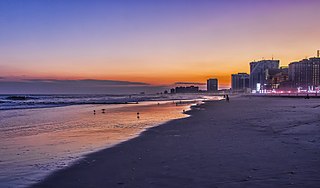
A seaside resort is a city, town, village, or hotel that serves as a vacation resort and is located on a coast. Sometimes the concept includes an aspect of official accreditation based on the satisfaction of certain requirements, such as in the German Seebad. Where a beach is the primary focus for tourists, it may be called a beach resort.

Cruise ships are large passenger ships used mainly for vacationing. Unlike ocean liners, which are used for transport, cruise ships typically embark on round-trip voyages to various ports of call, where passengers may go on tours known as "shore excursions". On "cruises to nowhere" or "nowhere voyages", some cruise ships make two- to three-night round trips without visiting any ports of call.
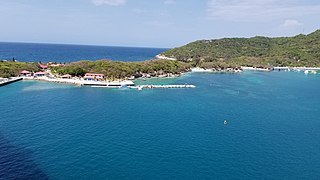
Labadee is a port located on the northern coast of Haiti within the arrondissement of Cap-Haïtien in the Nord department. It is a private resort leased to Royal Caribbean Group, for the exclusive use of passengers of its three cruise lines: Royal Caribbean International, Celebrity Cruises, and Azamara Club Cruises, until 2050. Royal Caribbean has contributed the largest proportion of tourist revenue to Haiti since 1986, employing 300 locals, allowing another 200 to sell their wares on the premises for a fee and paying the Haitian government US$12 per tourist. The resort is completely tourist-oriented, and is guarded by a private security force. The site is fenced off from the surrounding area, and passengers are not allowed to leave the property. Food available to tourists is brought from the cruise ships. A controlled group of Haitian merchants are given sole rights to sell their merchandise and establish their businesses in the resort. Although sometimes described as an island in advertisements, it is actually a peninsula contiguous with the island of Hispaniola. The cruise ship moors to the pier at Labadee capable of servicing the Oasis class ships, which was completed in late 2009. The commercial airport that is closest to Labadee is Cap-Haïtien International Airport.
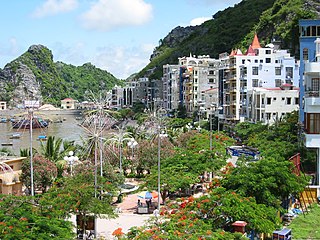
Cát Bà Island is the largest of the 367 islands spanning 260 km2 that comprise the Cat Ba Archipelago, which makes up the southeastern edge of Lan Ha Bay in Northern Vietnam. Cat Ba island has a surface area of 285 km2 and maintains the dramatic and rugged features of Ha Long Bay.
The economy of Saba, smallest island of the Netherlands, has always been limited by its small land mass and low population. Because Saba is a dormant volcano with rocky shores and only one beach, tourism was slow to develop. However, the island has become known for its eco-tourist opportunities, such as scuba diving, rock climbing, and hiking. The tourism industry now contributes more to the island's economy than any other sector.

Calibishie is a village in Dominica, located on the north-east coast of the island, immediately to the east of the village of Hampstead. The Calibishie Coast Travel Area is thought by many to be the most scenic and unspoiled region of Dominica. The Calibishie coast is one of the few areas in the world where the distance from the seashore to rain forest is little more than a mile. Calibishie is home to Dominica's Batibou, Hampstead, Hodges, Point Baptiste, Turtle and Woodford Hill Beaches.

Tourism in Nicaragua has grown considerably recently, and it is now the second largest industry in the nation. Nicaraguan President Daniel Ortega has stated his intention to use tourism to combat poverty throughout the country.

Saint Lucia, an island nation in the Caribbean islands, has a relatively large tourism industry. Due to the relatively small land area of the country, most of the governmental promotion is performed by the state-operated Saint Lucia Tourism Authority, led by Executive Chairperson Agnes.

Tourism is one of the Caribbean's major economic sectors, with 25 million visitors contributing $49 billion towards the area's gross domestic product in 2013, which represented 14% of its total GDP. It is often described as, "the most tourism-dependent region in the world".
Tourism in Haiti is an industry that has generated just under a million arrivals in 2012, and is typically one of the main sources of revenue for the nation. With its favorable climate, second longest coastline of beaches and most mountainous ranges in the Caribbean, waterfalls, caves, colonial architecture and distinct cultural history, Haiti has had its history as an attractive destination for tourists. However, unstable governments have long contested its history and the country's economic development throughout the 20th century.
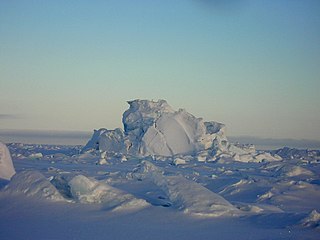
Tourism in Nunavut focuses on outdoor activities and culture of the local Inuit, the indigenous people of Nunavut. Wildlife watching is a popular tourist attraction, as the territory is home to a number of wildlife and bird sanctuaries. It is possible to spot walrus, polar bears, a large variety of birds and belugas throughout Nunavut. Outdoor adventure activities are also popular. Nunavut has a wide and lengthy river system, meaning that there are a large number of canoeing and kayaking opportunities to suit experienced travellers. Nunavut's vast expanse of uninhabited territory offers many opportunities for hiking and camping. However, the region's often extreme conditions and remote location often necessitates a guide, even for experienced campers.
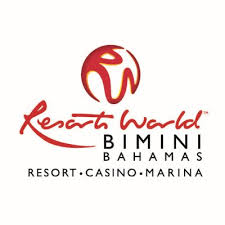
Resorts World Bimini Bahamas is a 750-acre (300 ha) Caribbean beachfront resort and casino located on North Bimini Island. Opened in 2013, the resort is operated by the Malaysia-based Genting Group. Their corporate office for the southeast USA is located in downtown Miami, Florida. The resort is located in Bimini, Bahamas, 42 miles east of Miami, Florida. Estimated cost to be built is US$220 Million.
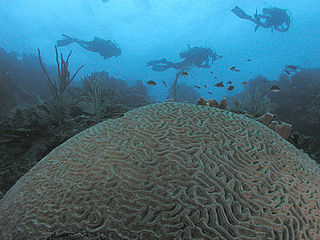
Honduras is a touristic destination that attracts visitors due to its natural environment, white and dark sand beaches, coral reefs, abundant flora and fauna, colonial era towns, and archaeological sites. Other attractions include the area's customs and traditional foods. In 2019 Honduras received 2.8 million foreigners, half of those tourists are cruise passengers.

The economy in the Caribbean region is highly dependent on its tourism industry; in 2013, this industry constituted 14% of their total GDP. This region is largely appealing for the sun, sand, and sea scene. Despite the fact that tourism is very reliant on the natural environment of the region, it has negative environmental impacts. These impacts include marine pollution and degradation, as well as a high demand for water and energy resources. In particular, the degradation of coral reefs has a large impact on the environment of the Caribbean. Environmental damage affects the tourism industry; therefore, the tourism sector, along with the public sector, makes efforts to protect the environment for economic and ethical reasons. Although these efforts are not always effective, there are continuous efforts for improvement.

Overtourism is the congestion or overcrowding from an excess of tourists, resulting in conflicts with locals. The World Tourism Organization (UNWTO) defines overtourism as "the impact of tourism on a destination, or parts thereof, that excessively influences perceived quality of life of citizens and/or quality of visitor experiences in a negative way". This definition shows how overtourism can be observed both among locals, who view tourism as a disruptive factor that increasingly burdens daily life, as well as visitors, who may regard high numbers of tourists as a nuisance.
References
This article needs additional citations for verification .(January 2009) |
- ↑ JEFFREY GETTLEMAN (2005-02-06). "Hiking Dominica's Peaks". New York Times . Retrieved 2008-08-05.